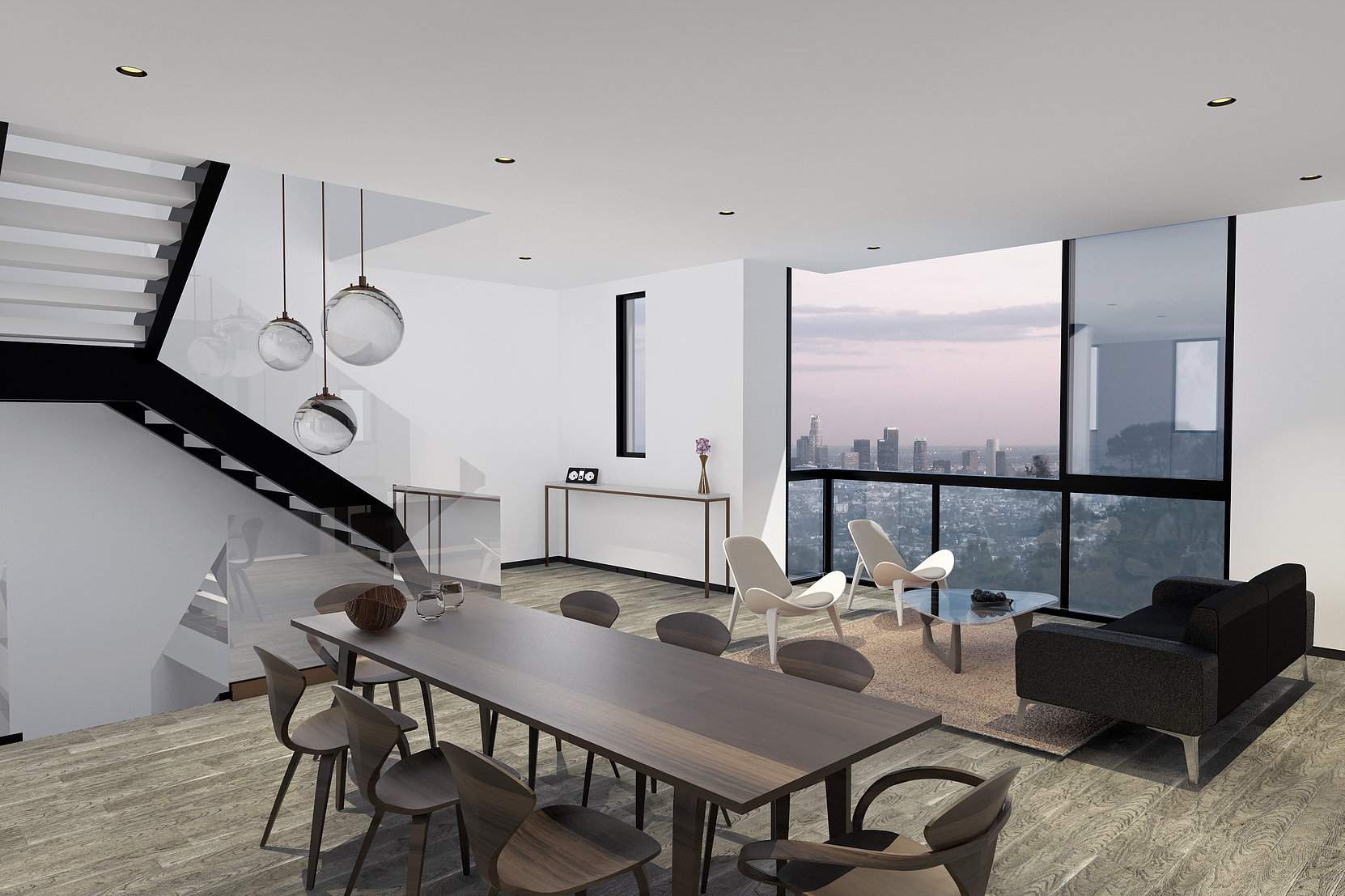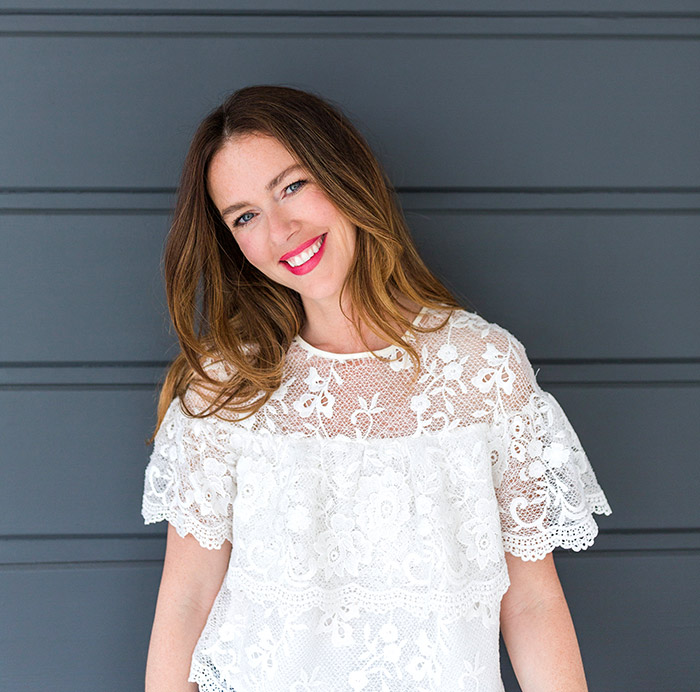I represented Preston Lane this summer, and it was such a treat to work with the team over at 4Site Real Estate. They care so much about the integrity and quality of their builds. I sat down with Jeff Farrington who headed up the project for a Q and A right before we went to market. Enjoy!
Q: What was the inspiration for Preston Lane?
A: This project was inspired by the row houses that are so commonly found in Boston, New York, San Francisco, etc. The city’s Small Lot Subdivision Ordinance created this new housing typology in Los Angeles in 2006, and it works really well in the denser parts of the city, like Echo Park. In many ways we sought to provide the best of all possible worlds for modern urban living: privacy, views, fee-simple ownership, no HOA, open floor plan, low maintenance yard/patio, zero maintenance exterior, and excellent proximity to cultural and social amenities. By creating a series of terraced homes on a hillside in Echo Park, residents are able to own their own home in a neighborhood with tremendous scarcity for single-family residences while enjoying many of the benefits that come with city living (but are rare in single family neighborhoods).
Q: You chose to collaborate with Patrick Tighe on this project. What drew you to him as an architect?
A: We first learned of Tighe Architecture following their work on the Sierra Bonita Affordable Housing project in West Hollywood. I was actually working for the Mayor’s Office in West Hollywood during the summer of 2010 and toured the project at that time. Based on the size and scope of the project it seemed like they would be a good fit for what we try to accomplish for our larger multi-family projects. They’ve designed 3 multi-family projects and 2 small lot subdivision projects (including Preston Lane) to date for us, and we’ve developed a really good working relationship with Patrick and his staff.
Q: What excited you to develop in the community of Echo Park?
A: Echo Park and Silver Lake are communities that have always embraced taking risks architecturally (Schindler, Neutra, etc.) and it’s exciting to try something new and interesting within that historical context. Also, there’s such an opportunity to use steep hillside sites to our advantage and as a way to create interesting design/architecture for both the homeowner and community at large. There’s also a tremendous amount of change occurring in Echo Park right now. It’s such a dynamic place with such a unique confluence of people from every walk of life. You can see that expressed in the people that stroll Sunset, the diversity of dining and shopping opportunities, and in the varied architecture of the neighborhood. I love that about Echo Park and hope that Preston Lane contributes positively to this cultural and architectural experience.
Q: Describe your aesthetic in three words:
A: Clean, sophisticated, custom.
Q: You’re a long-time resident of the East Side. Where do you go to get inspired?
A: Walking Echo Park Lake is without a doubt one of my favorite things to do. Sometimes I run the Lake for exercise or a walk with my 8-month daughter. I often find clarity in my thoughts and perspective on our approach as developers and builders during these times. My time around the Lake inspires me to keep pushing forward and working through the challenges of building in the city of LA. More practically, when I’m looking for concrete design ideas I often go online. Urbanize LA has grown into a great online resource that features the latest in LA real estate development. As an office, we often visit newly constructed projects that are nearby. There are some, probably not enough, developers doing some really interesting work in the city, and it’s always good to stay on top of current trends and ideas.
Q: Best restaurant to go for dinner on the East Side? (What is your perfect workday in LA? Where would you start for coffee/breakfast…)
A: The food at The Park is always good, consistent, and well-priced. It’s your quintessential go-to neighborhood restaurant. However, if my wife and I are looking to go out for something special, then we love to go to Alimento and often find ourselves drawn to MILK afterward for dessert. I don’t exactly have a job that allows for breakfast before work, but my ideal workday would start with a walk with my wife through Echo Park Lake to Blue Bottle for coffee, then a stop off at our various job sites to provide supervision and direction to the sub-contractors. If I have time, a pizza lunch and salad at Folliero’s in Highland Park would help get me through the rest of the day.
Q: How has the response surrounding this new development been?
A: We haven’t done much marketing to date so I’m not quite sure. Prior to construction, the response was mixed. Some people loved our design and approach while others, no matter what we proposed, weren’t interested in seeing any more housing built in their neighborhood.
Q: How do environmentally-friendly features in a home positively impact the homeowner’s experience? (Both from a day-to-day perspective, and then more of a macro perspective of the duration of home ownership.)
A: For homeowners that are concerned about climate change, pollution, and the environment, I think these people want to feel like they are part of the solution rather than the problem. There’s always more work to be done but, infill development (less driving from exurban commuting), smart home features (nest thermostat, solar ready, and electric car charging availability), and energy efficiency (energy star appliances and 100% LED lighting) begin to address these problems in meaningful ways. There is a certain pride of ownership when you feel that your living experience is part of the solution instead of the problem.
Q: What are your predictions for environmentally conscious home building in the next 5-10 years?
A: The home building industry is not known for its rapid pace of change. Part of this is because new homes must adhere to local building codes, which don’t evolve quickly, and that largely drives the process of what you can and can’t do within the home. That being said, I think the marketplace is certainly pushing cities and builders to consider the environment more as time goes on. I expect to see more modular home construction or offsite construction as a way to mitigate waste and decrease construction times. The Smart Home will continue to make advancements and wring more efficiency from the home, as well as communicate its energy needs with the grid more intelligently. Electric cars are here to stay, and I would expect that integrating those cars and their batteries into the home, much like Tesla is already doing, will become more common practice. Perhaps the biggest thing we can expect to see over the next decade that will make housing more “environmentally conscious” will simply be building more of it in the right places. Adding density around train stations, employment centers, and on top of or near commercial/retail corridors is the essential land use component that will promote a vibrant urban life, reducing auto-dependency and all of its negative externalities. (Pollution, car-pedestrian deaths, traffic, etc.)


 Originally hailing from the suburbs of Chicago, Joy fell in love with Los Angeles while vacationing here as a child. After 22 years of calling the Eastside her home, she has no plans to leave. She currently resides in Glassell Park with her husband Matt, their son Levi, and their 10 year old rescued pup, Cubby. When she’s not working with clients, you might find her exploring local boutiques, sampling the fare at one of the city’s newest restaurants with her girlfriends, or attending baby gymnastics classes with Levi.
Originally hailing from the suburbs of Chicago, Joy fell in love with Los Angeles while vacationing here as a child. After 22 years of calling the Eastside her home, she has no plans to leave. She currently resides in Glassell Park with her husband Matt, their son Levi, and their 10 year old rescued pup, Cubby. When she’s not working with clients, you might find her exploring local boutiques, sampling the fare at one of the city’s newest restaurants with her girlfriends, or attending baby gymnastics classes with Levi.

